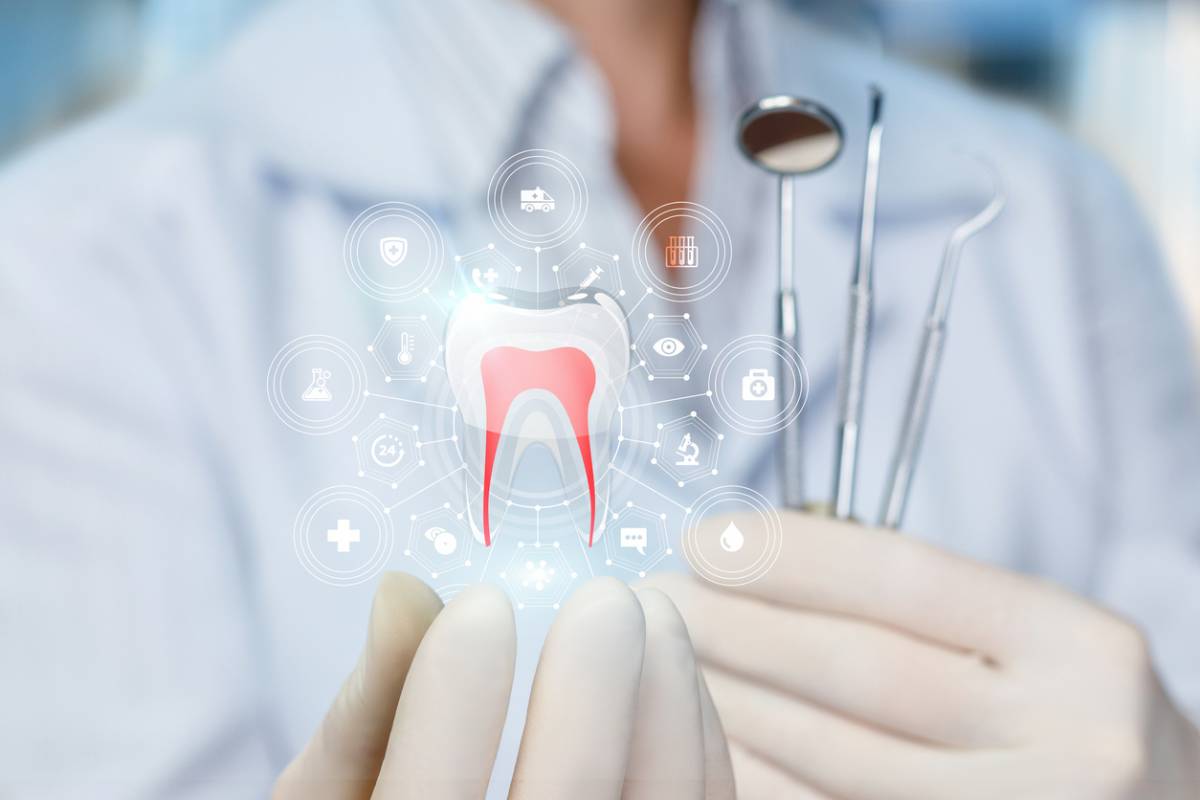Not including your wisdom teeth, adults should have 32 teeth. These include incisors, canines, premolars, and molars. While your teeth look fairly small and solid from the outside, they are actually highly complex structures. But, what is inside of your teeth? Below you will find more information about your tooth’s structure.
Structures Inside Your Teeth
There are a variety of complex components that make up your teeth. Below you will find the unique structures found in your teeth.
Enamel:
The outermost portion of your tooth is referred to as the enamel. It is the hard, white, and shiny visible portion on the outside of your tooth. Despite being a thin layer on your teeth, it is the strongest tissue in your entire body.
Dentin:
The second layer of your tooth is known as dentin. It makes up the majority of your tooth and is a hard substance. However, dentin is very porous, which is why your enamel is so important. Your enamel protects the dentin from harmful bacteria, which is why having a consistent daily oral care routine can help keep your enamel strong and intact.
Pulp:
The innermost portion of your tooth is referred to as the pulp. Your pulp is made up of soft tissue, including nerves, connective tissue, and blood vessels. While the pulp is integral as your tooth develops, it’s not necessary once your tooth has fully developed. When your tooth is developing, the pulp provides nourishment. However, once the tooth has fully developed, an infected tooth or damaged pulp can be removed (via a root canal) in order to save your natural tooth.
Crown:
The portion of your tooth’s structure seen in your mouth is referred to as the crown. The crown is the portion of your tooth that is above your gum line.
Root:
The portion of your tooth below the surface of your gum line is referred to as the root. It is twice as long as your crown.
Periodontal Ligament:
The periodontal ligament supports your tooth by keeping it in the bone socket around your tooth. The ligament helps cushion the area around it when you chew and bite.
Gums:
Your gums are the soft tissue that surrounds your teeth. The technical name for your gums is “gingiva.”
Bone:
Your tooth’s root is held in place by bone. Your teeth and the bone that anchors it have a reciprocal relationship. Healthy teeth can help stimulate healthy bone tissue, and healthy bone tissue can help stimulate healthy teeth. However, oral health issues can negatively impact the bone.
Root Canal Therapy
One of the most common issues that can impact your tooth’s structure are issues with the pulp. Tooth decay can penetrate your enamel and dentin, which can ultimately impact the health of your tooth’s root. An infection in your tooth’s root can cause major issues when it comes to both your oral health and overall health. If your dentist recommends a root canal, it’s important to get one as soon as you can. Affordable root canal therapy can help save your natural tooth while reducing the risks associated with an infection.
If you have any symptoms that indicate that you may need a root canal, contact Encino Family Dental. Some of the most common signs that you may need a root canal include severe toothaches, pain when chewing, prolonged sensitivity to hot or cold temperatures, discoloration, or swelling or tenderness near your gums. The team at Encino Family dental can help determine what kind of treatment is necessary for your dental issues. Contact the top dental office for family dental care in Encino today for an appointment!

